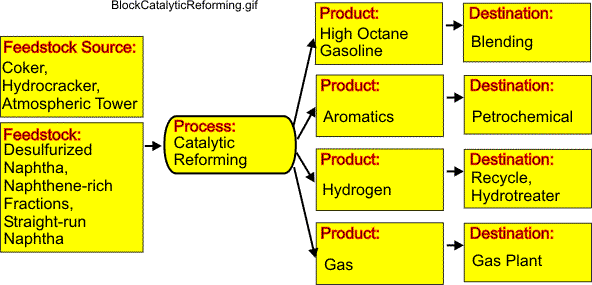 |
CATALYTIC REFORMING
The figure provided here illustrates the block diagram of a reforming process.
Catalytic reforming is an important process used to convert low-octane naphthas into high-octane gasoline blending components called reformates.
“Reforming” represents the total effect of numerous reactions such as cracking, polymerization, dehydrogenation, and isomerization taking place simultaneously.
Depending on the properties of the naphtha feedstock (as measured by the paraffin, olefin, naphthene, and aromatic content) and catalysts used, reformates can be produced with very high concentrations of desirable products. Such desirable products include toluene, benzene, xylene, and other aromatics used in gasoline blending and petrochemical processing.
Hydrogen, a significant by-product, is separated from the reformate for recycling and use in other processes. The term "reformate" refers to products produces by a reforming process.
A catalytic reformer comprises a reactor section and a product-recovery section. Most processes use platinum as the active catalyst.